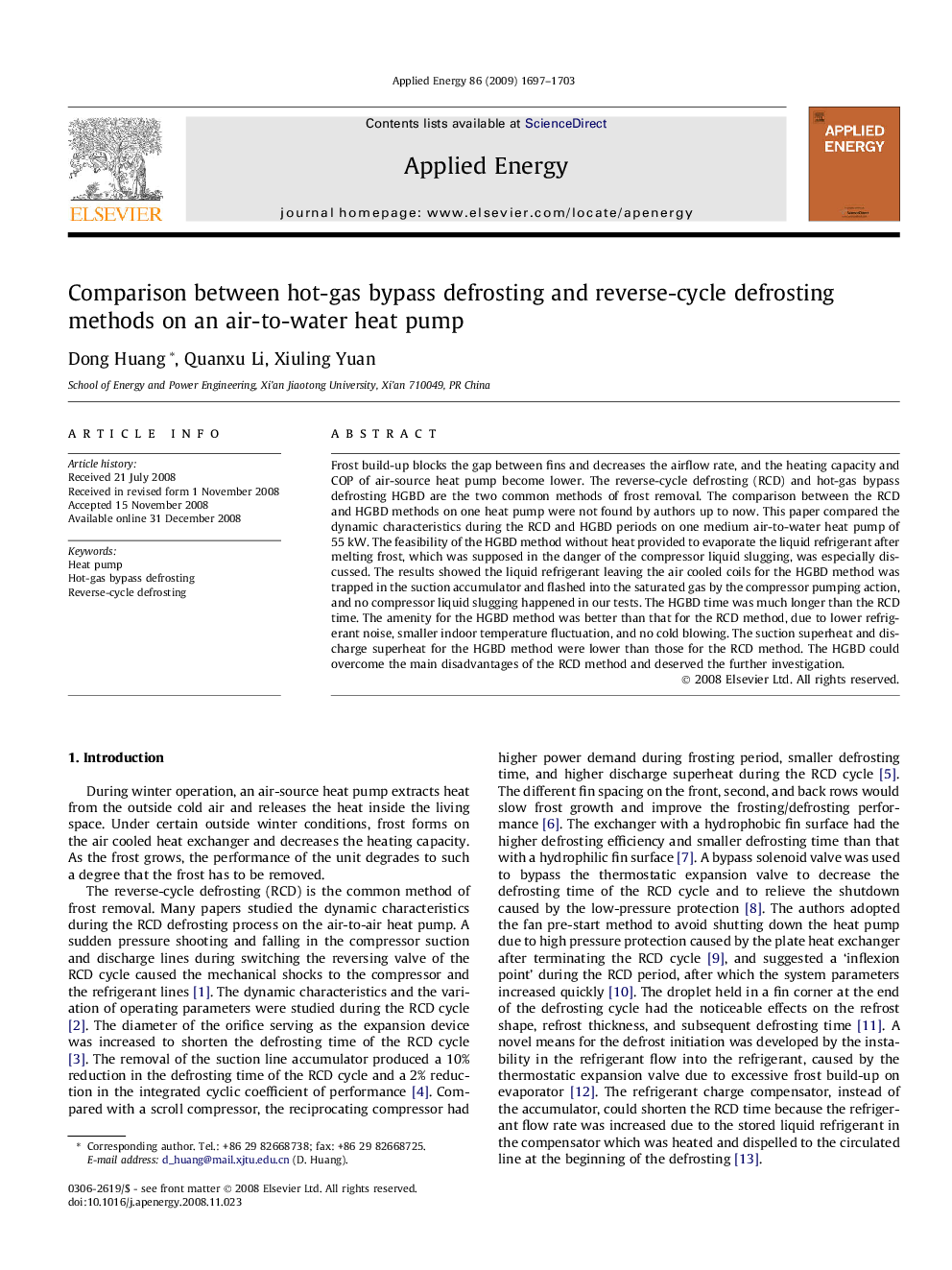| Article ID | Journal | Published Year | Pages | File Type |
|---|---|---|---|---|
| 244949 | Applied Energy | 2009 | 7 Pages |
Frost build-up blocks the gap between fins and decreases the airflow rate, and the heating capacity and COP of air-source heat pump become lower. The reverse-cycle defrosting (RCD) and hot-gas bypass defrosting HGBD are the two common methods of frost removal. The comparison between the RCD and HGBD methods on one heat pump were not found by authors up to now. This paper compared the dynamic characteristics during the RCD and HGBD periods on one medium air-to-water heat pump of 55 kW. The feasibility of the HGBD method without heat provided to evaporate the liquid refrigerant after melting frost, which was supposed in the danger of the compressor liquid slugging, was especially discussed. The results showed the liquid refrigerant leaving the air cooled coils for the HGBD method was trapped in the suction accumulator and flashed into the saturated gas by the compressor pumping action, and no compressor liquid slugging happened in our tests. The HGBD time was much longer than the RCD time. The amenity for the HGBD method was better than that for the RCD method, due to lower refrigerant noise, smaller indoor temperature fluctuation, and no cold blowing. The suction superheat and discharge superheat for the HGBD method were lower than those for the RCD method. The HGBD could overcome the main disadvantages of the RCD method and deserved the further investigation.
